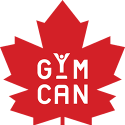Gymnastics was introduced in early Greek civilization to facilitate bodily development through a series of exercises that included running, jumping, swimming, throwing, wrestling, and weight lifting.
Many basic gymnastic events were practiced in some form before the introduction by the Greeks of gymnazein, literally, “to exercise naked.” Physical fitness was a highly valued attribute in ancient Greece, and both men and women participated in vigorous gymnastic exercises. The Romans, after conquering Greece, developed the activities into a more formal sport, and they used the gymnasiums to physically prepare their legions for warfare. With the decline of Rome, however, interest in gymnastics dwindled, with tumbling remaining as a form of entertainment.
Modern Gymnastics
In 1774, a Prussian, Johann Bernhard Basedow, included physical exercises with other forms of instruction at his school in Dessau, Saxony. With this action began the modernization of gymnastics, and also thrust the Germanic countries into the forefront in the sport. In the late 1700s, Friedrich Ludwig Jahn of Germany developed the side bar, the horizontal bar, the parallel bars, the balance beam, and jumping events. He, more than anyone else, is considered the “father of modern gymnastics.” Gymnastics flourished in Germany in the 1800s, while in Sweden a more graceful form of the sport, stressing rhythmic movement, was developed by Guts Muth. The opening (1811) of Jahn’s school in Berlin, to promote his version of the sport, was followed by the formation of many clubs in Europe and later in England. Modern gymnastics excluded some traditional events, such as weight lifting and wrestling, and emphasized form rather than personal rivalry.
The European Gymnastics Federation FEG (Fédération Européenne de Gymnastique), which included representatives from Belgium, France, and the Netherlands was founded on July 23, 1881 in Liège and Nicolas J. Cupérus was named a President. Forty years later, on April 7th 1921, the FEG office becomes the International Gymnastics Federation FIG (Fédération Internationale de Gymnastique).
In 1896, gymnastics appeared in the program of the first Olympic Games of our era, revitalized by Baron Pierre de Coubertin and included events such as rope-climbing and club-swinging. Seven years later in 1903, the FIG organized its first world championships for men exclusively. Women were added to the world championship programme in 1934 although they were welcomed at the Olympic Games as early as 1928 where they competed in a team event. Individual apparatus competitions were not added until 1952. Rhythmic gymnastics was added to the Olympic Games programme in 1984, and trampoline made its Olympic debut at the 2000 Olympic Games in Sydney.
Gymnastics in Canada
ARTISTIC:
Canada first competed at a world-level FIG competition in 1956 in Melbourne when it attended with only one male gymnast (Ed Gagnier) and one female gymnast (Ernestine Russell). Curtis Hibbert won Canada’s first-ever medal at a World Championships when he captured a silver medal on the high bar at the 1987 World Championships in Rotterdam, NED. He followed up that performance with a bronze in vault at the 1992 World Championships in Paris, FRA. Other World Championship medals have included a silver on high bar by Alexander Jeltkov in 1999, two bronze medals won by Kyle Shewfelt on the floor exercise and vault in 2003, a silver on the floor by Brandon O’Neill in 2005, and a bronze on the floor at the 2006 World Championships for Shewfelt. Elyse Hopfner-Hibbs won Canada’s first World Championship medal for the women on the balance beam at the 2006 World Championships, and Ellie Black became the all-around silver medallist at the 2017 World Championships in front of a home town crowd in Montreal. Shewfelt made Canadian gymnastics history when we won the gold medal on the floor exercise at the 2004 Olympic Games in Athens.
For more Canadian artistic gymnastics history, enjoy this “51 years of Canadian Artistic Gymnastics Results at Major FIG Competitions” document written by Hardy Fink in December 2006.
RHYTHMIC:
The first Olympic Games to feature rhythmic gymnastics was in 1984 in Los Angeles, USA, and Canadian Lori Fung became the sports first Olympic champion, taking home the gold medal. In 2006, Alexandra Orlando won six gold medals at the Commonwealth Games in Melbourne, AUS, becoming Canada’s most-decorated athlete at those Games. In 2012, Canada’s senior group made history by becoming Canada’s first-ever group to compete at the Olympic Games, placing 11th in the qualification rounds.
TRAMPOLINE:
Canada sent its first trampoline team to the World Championships in Stuttgart, GER in 1972, and when the sport made its Olympic Games debut in Sydney, AUS in 2000, Karen Cockburn won her first Olympic medal – a bronze, and Mathieu Turgeon also took home a bronze medal. Cockburn would go on to win a silver medal at the 2004 Olympic Games and 2008 Olympic Games, becoming one of Canada’s most decorated Olympians. Rosie MacLennan became Canada’s first Olympic champion in trampoline by capturing the gold medal at the 2012 London Olympic Games. She followed it up with a second gold at the 2016 Olympic Games in Rio de Janeiro – becoming the only trampolinist to successfully defend an Olympic title. Rosie was also Canada’s Opening Ceremonies Flag bearer at the 2016 Olympic Games.
For an excellent synopsis of Canada’s trampoline gymnastics history, please click here.
OUR OLYMPIANS
Canadian gymnasts first competed at the 1908 Olympic Games, when only men competed in the individual all-around and team events. Gymnastics returned to the Olympics in 1956 with events for both men and women. Canada has fielded athletes at every Olympic Games since 1956.
Click here for a complete list of our Canadian gymnastics Olympians
CREDITS:
http://www.scholastic.com/teachers/article/history-gynastics-ancient-greece-modern-times
http://www.gymnastics247.com/history.html

